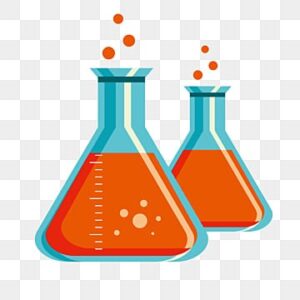Gas Chromatography: Qualitative and Quantitative Analysis
Gas chromatography is a sensitive analytical technique that allows for qualitative and quantitative analysis applicable to microsamples.
Qualitative Analysis
The measurement of the absolute retention time is the key element in the qualitative determination of a compound contained in a gas mixture. It represents the time required for the injected substance to be eluted from the beginning to the exit of the column, and it is characteristic of each substance. However, the absolute retention time may have small variations due to experimental conditions, so the relative retention time is used.
For a generic substance A, the relative retention time is obtained from the ratio between the absolute retention time of substance A and that of a substance S present in the mixture, considered a standard reference: tR = tA / tS. When the composition of the mixture to be analyzed is qualitatively predictable, and there are serious indications that certain gases are present, only identifying the corresponding peak for each of the presumed components is necessary.
If, however, the identification of one or more components of an unknown mixture is required, specific techniques such as enrichment with known compounds may be necessary based on the retention times of various peaks.
Enhancement of Peak Intensity
A notable enhancement of the relative peak intensities can be obtained in correspondence to the added substances if the hypothesis matches reality. Nonetheless, a positive test shouldn’t be considered definitive, as it is always possible for two different components to have the same retention time. Changing experimental conditions and performing a series of chromatograms can help in distinguishing different species. For instance, the combination of gas chromatography and mass spectrometry constitutes a more refined example.
In the case of a series of homologous substances, there may be linear relationships between the logarithms of the retention times and the number of carbon atoms of the various components. A graph of such a nature allows for the calculation of the retention time of a substance with an intermediate number of atoms through interpolation.
Quantitative Analysis
Quantitative analysis represents the most important application of gas chromatography, and it utilizes the area underlying the peak as the analytical basis. Determining the areas of the peaks can be done with automatic integrators or, in the case of poorly separated peaks, with a planimeter. Once the areas corresponding to the peaks of the various components are determined, a method to determine the concentration of the various components must be established.
One of the methods used is direct calibration, which evaluates the various components by means of a calibration equivalent to the introduction of multiple known composition samples for each component. Alternatively, there is the method of internal standardization, where the concentrations are calculated by determining the area of all the peaks corresponding to the various components and relating each area to 100, i.e., to the total sum.
Applications
Gas chromatography is widely used for the determination of various substances, particularly in forensic science for the qualitative and quantitative determination of substances such as cannabinoids, cocaine, and heroin. For instance, drug samples are analyzed via gas chromatography after undergoing an accelerated solubilization procedure using ultrasound baths and subsequent filtration. Another area that extensively utilizes this technique is the environmental sector, for solving highly complex analytical problems such as the determination of insecticide and pesticide residues.
In a more digital era, article focuses may be on the integration of gas chromatography with modern technologies like mass spectrometry, allowing for more sensitive and accurate analysis. The environmental and healthcare scopes, each dealing with unique challenges, may also be further explored. The article will offer value by addressing the specific applications of gas chromatography in these contexts.
